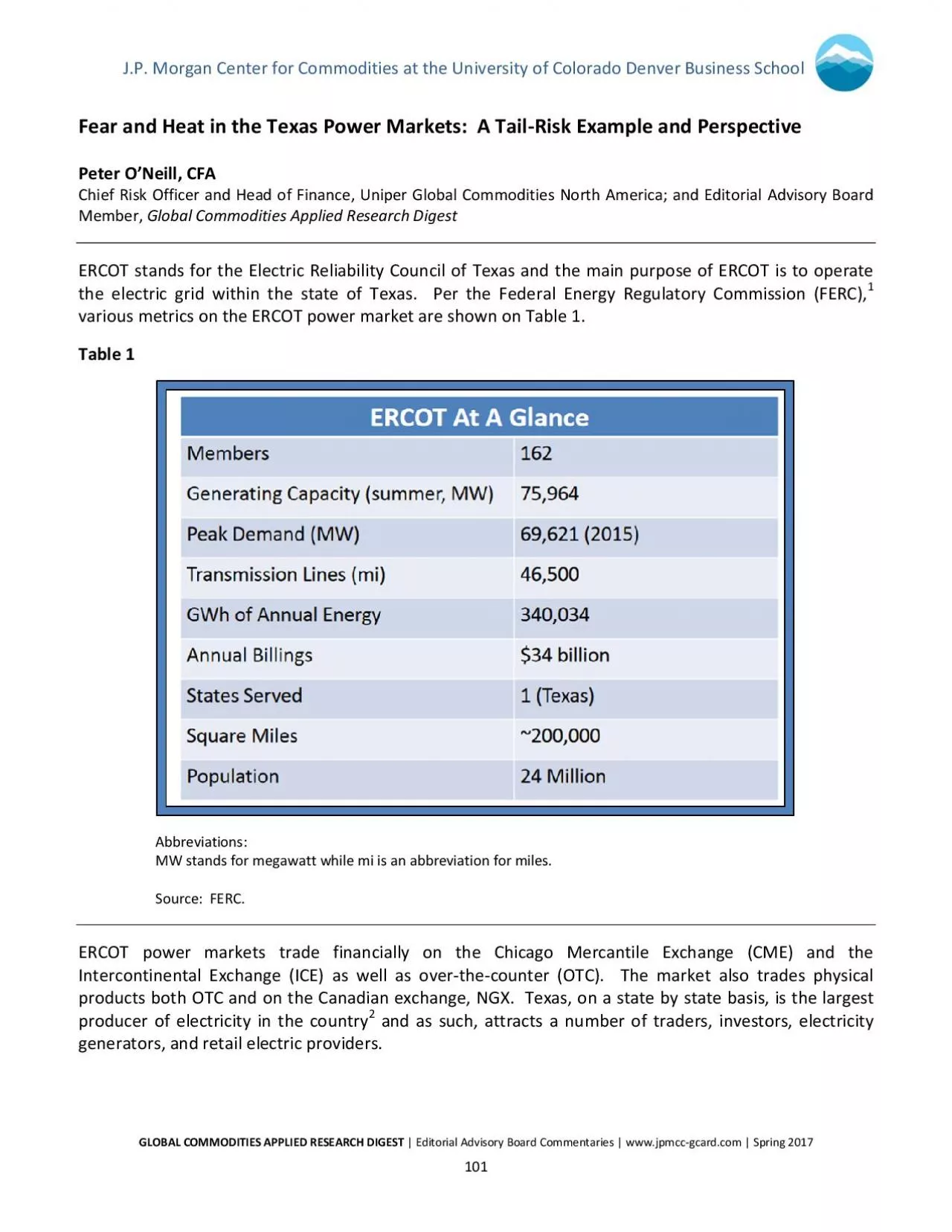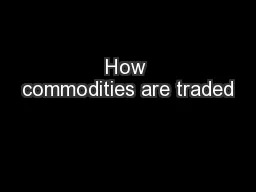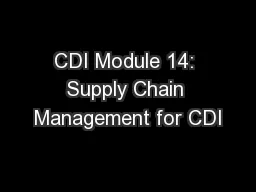PDF-x0000x0000JP Morgan Center for Commodities at the University o
Author : deborah | Published Date : 2022-09-21
GLOBAL COMMODITIES APPLIED RESEARCH DIGEST Fear and Heat in the Texas Power Markets A Tail ERCOT stands for the Electric Reliability Council of Texas and the main
Presentation Embed Code
Download Presentation
Download Presentation The PPT/PDF document "x0000x0000JP Morgan Center for Commoditi..." is the property of its rightful owner. Permission is granted to download and print the materials on this website for personal, non-commercial use only, and to display it on your personal computer provided you do not modify the materials and that you retain all copyright notices contained in the materials. By downloading content from our website, you accept the terms of this agreement.
x0000x0000JP Morgan Center for Commodities at the University o: Transcript
Download Rules Of Document
"x0000x0000JP Morgan Center for Commodities at the University o"The content belongs to its owner. You may download and print it for personal use, without modification, and keep all copyright notices. By downloading, you agree to these terms.
Related Documents














